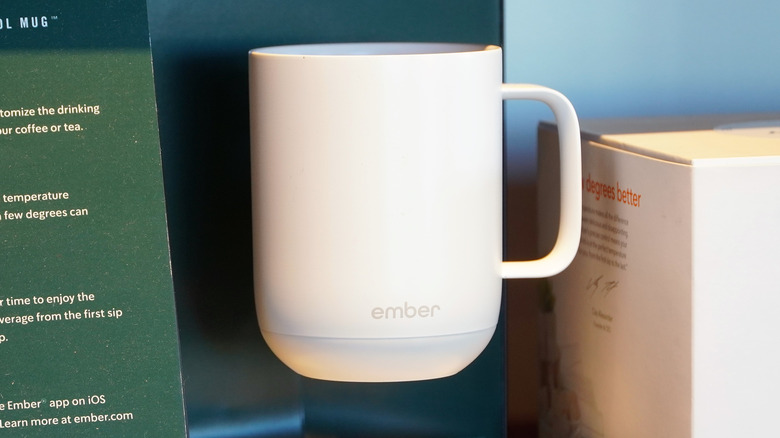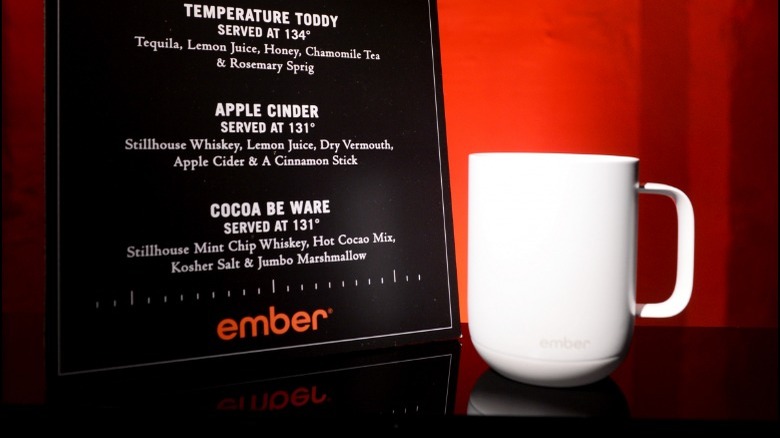How Do Temperature Control Mugs Actually Work?
We've all been there. You make a coffee or tea, get distracted, and by the time you've remembered your mug, its contents are lukewarm (at best) or straight-up cold. Thankfully, for those of us with a short attention span, innovations have come along with the sole goal of keeping drinks warm — but do you know how they work?
You may be familiar with Ember, a company known for temperature control devices, but other brands like Muggo have also entered the market. Ember's mugs connect via Bluetooth with an app that allows you to control your drink's temperature so that it's always perfect. Featuring a built-in battery, the 14-ounce mug only requires 80 minutes to charge when left on the charging coaster. This all seems great, so what's the catch? Ember and other temperature control mugs or coasters come at a cost — the Ember mug in the basic colors will run you about $150.
So, how do temperature control mugs like Ember work and are they worth it?
The science behind temperature control mugs is fascinating but isn't obvious from the outside. In short, the mugs can warm the liquid they contain because of the power they receive from their charging coasters. This energy is funneled into the mug's lithium-ion batteries, which power the heating system and the sensors that detect and maintain your beverage's temperature. Using the Ember app, you can specify what you're drinking, and the mug will do the rest, keeping everything from hot cocoa to lattes at the perfect temperature. The mugs are made of stainless steel coated in ceramic, so you never get a metallic taste. Others, like Muggo, work similarly.
So, do they actually work, and are they worth the money? In a review, Bustle's Amy Biggart's Amy Biggart mentions that the major drawbacks of the Ember mug include its smaller size and that it is not dishwasher safe. Biggart also concludes that the Ember mug "has been a complete game-changer" and is "absolutely worth its expense.

